The Caribbean, famed for its sun-drenched beaches and crystal-clear waters, holds a treasure trove of eco-adventures beyond its sandy shores. This guide explores the heart of the Caribbean’s lesser-known landscapes, where eco-friendly activities offer travelers a deeper connection with nature. From the lush rainforests and hidden waterfalls to the mysterious caves and diverse marine ecosystems, the Caribbean’s natural wonders invite exploration and conservation. Each destination and activity highlighted in this guide showcases the region’s commitment to sustainable tourism, allowing visitors to experience the beauty of the Caribbean while supporting efforts to preserve its environment for future generations. Whether hiking through ancient forests, snorkeling in protected waters, or exploring sustainable farms, these eco-adventures provide a unique perspective on the Caribbean’s rich biodiversity and cultural heritage.
1. Hiking the Waitukubuli National Trail, Dominica
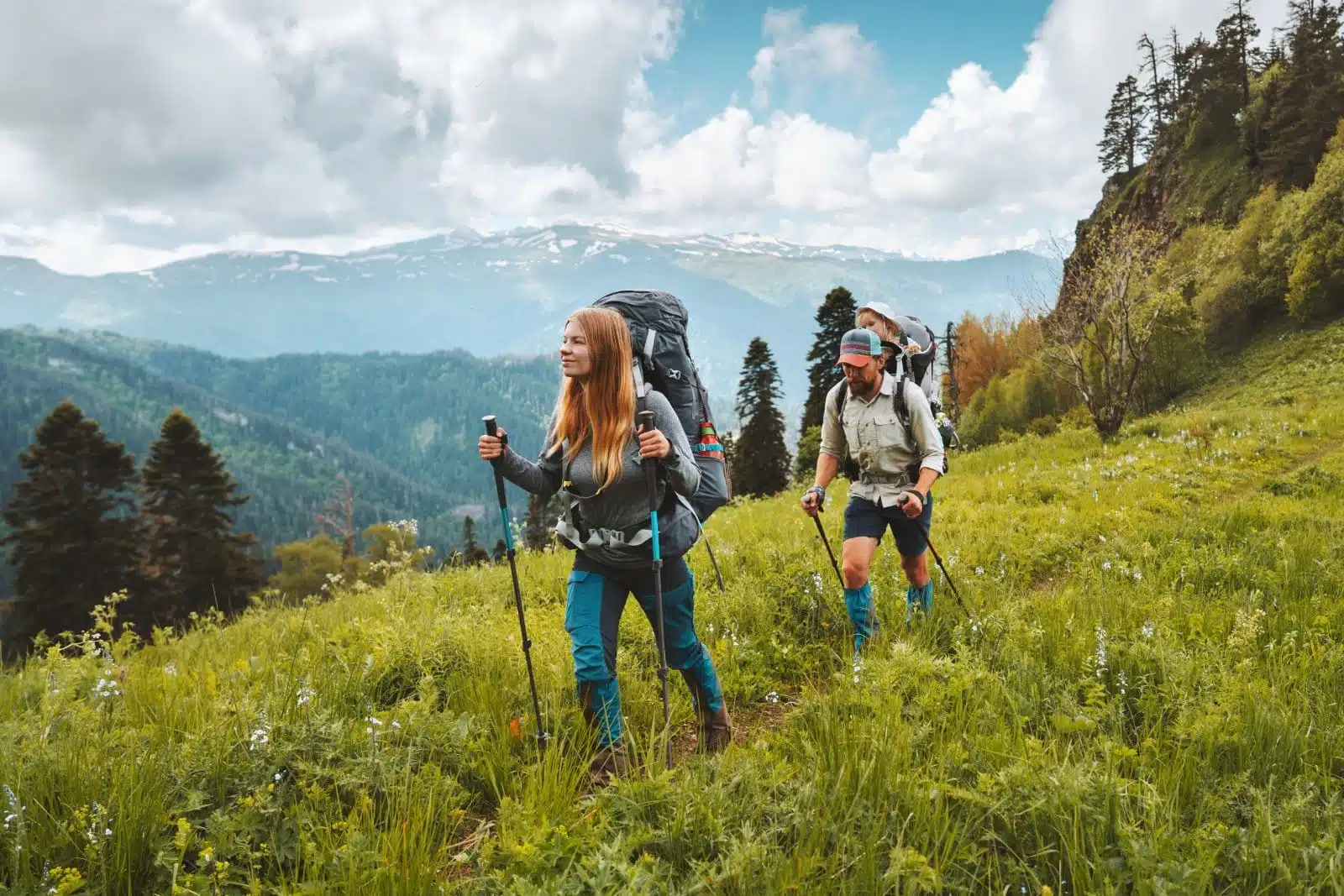
Image Credit: Shutterstock / everst
Dominica, known as the “Nature Island” of the Caribbean, offers one of the most ambitious eco-adventures in the region: the Waitukubuli National Trail. Spanning 185 kilometers, it’s the longest hiking trail in the Caribbean, traversing the island’s rugged terrain, tropical rainforests, volcanic features, and traditional Carib (Kalinago) villages. The trail is divided into 14 segments, offering a unique glimpse into the island’s natural and cultural landscapes. Hikers can encounter a variety of ecosystems, waterfalls, hot springs, and panoramic views, making it a comprehensive eco-tourism experience.
Insider’s Tip: Tackle the trail in segments rather than attempting the entire route at once, allowing time to fully appreciate each area’s distinct beauty. Hiring a local guide benefits navigation and enriches the experience with insights into the island’s ecology and history.
When to Travel: The best time to hike the Waitukubuli National Trail is during the dry season, from December to April, when the paths are less muddy and the weather is more conducive to hiking.
How to Get There: Dominica is accessible by air from major Caribbean hubs like Antigua and Barbados, with connections to Douglas-Charles Airport. From there, local transportation can be arranged to various trailheads.
2. Snorkeling in the Hol Chan Marine Reserve, Belize
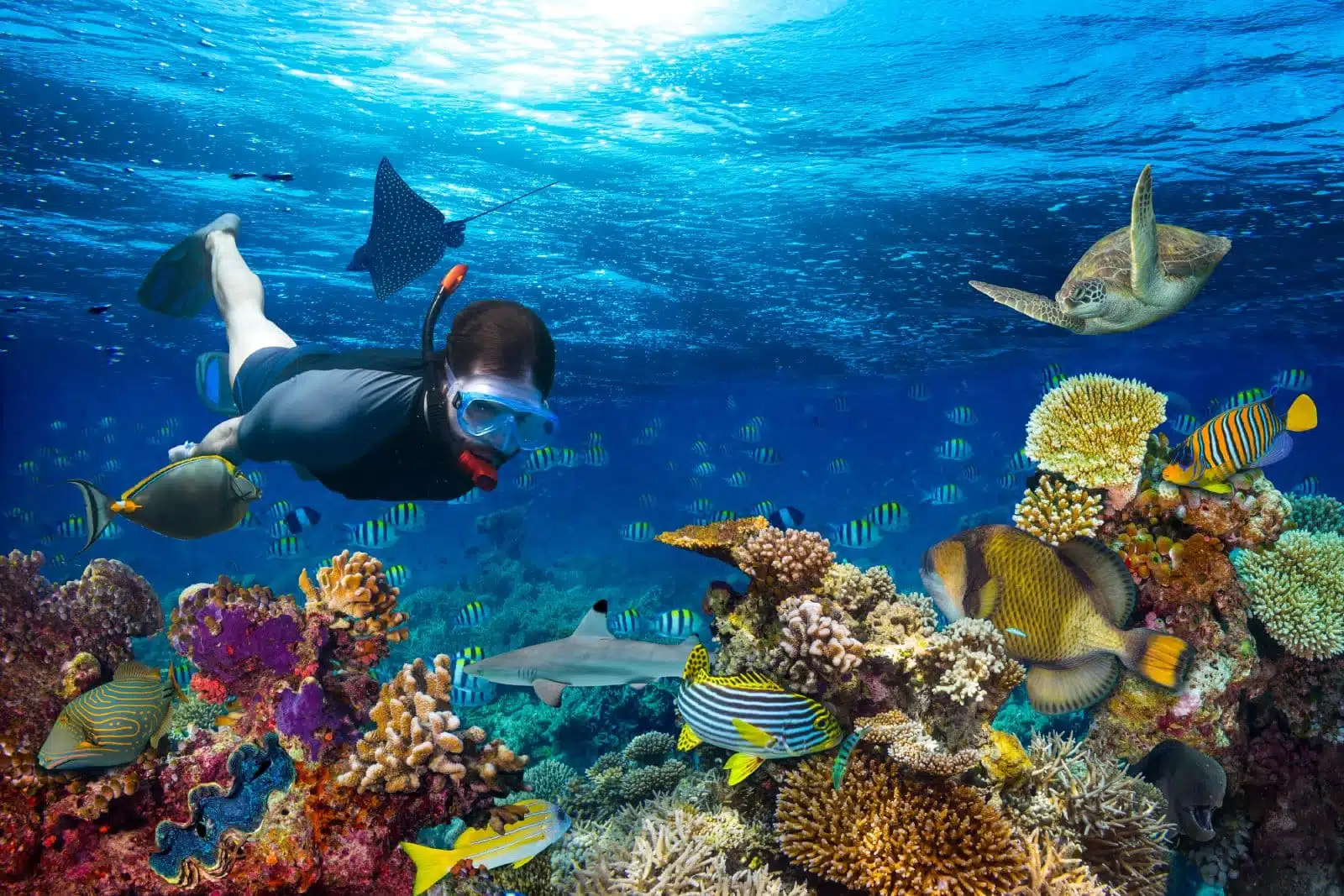
Image Credit: Shutterstock / stockphoto-graf
The Hol Chan Marine Reserve, off the coast of Ambergris Caye in Belize, is a model for marine conservation in the Caribbean. Spanning about 18 square kilometers, the reserve is divided into zones that protect various marine habitats, including coral reefs, seagrass beds, and mangrove forests. Snorkeling in Hol Chan offers close encounters with abundant marine life, such as colorful fish, sea turtles, stingrays, and even nurse sharks, in crystal-clear waters. The reserve’s efforts to preserve the Belize Barrier Reef, a UNESCO World Heritage site, demonstrate a successful balance between tourism and environmental protection.
Insider’s Tip: Visit during the early morning or late afternoon when the marine life is most active, and fewer tour boats are present, allowing for a more serene snorkeling experience.
When to Travel: The best visibility and weather conditions for Hol Chan Marine Reserve snorkeling are from December to May, avoiding the rainy season.
How to Get There: Fly into Belize City, then take a short flight or ferry to Ambergris Caye. Numerous tour operators from San Pedro offer Hol Chan Marine Reserve trips.
3. Birdwatching in Trinidad’s Asa Wright Nature Centre
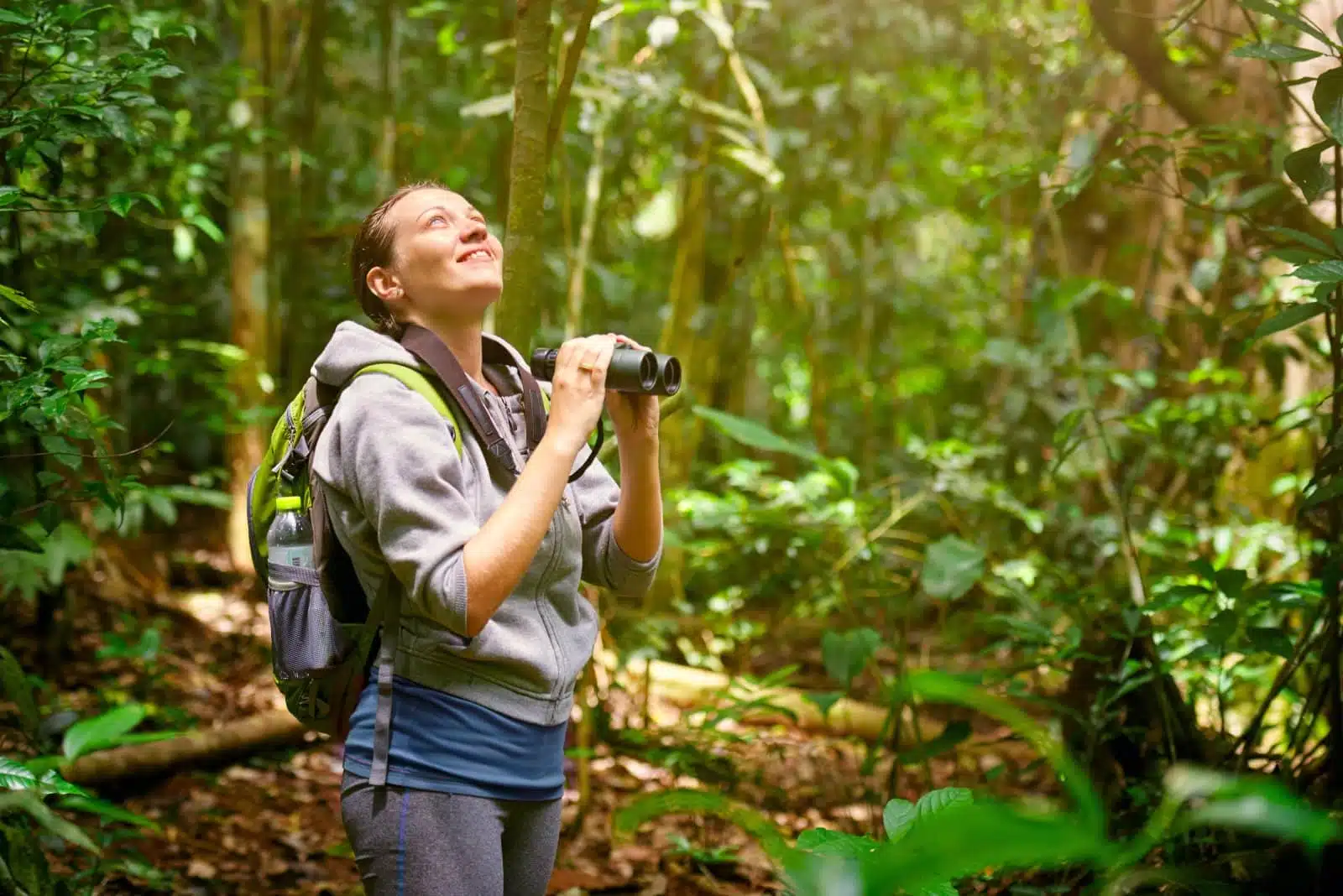
Image Credit: Shutterstock / soft_light
The Asa Wright Nature Centre, nestled in the verdant Arima Valley of Trinidad, is a world-renowned birdwatching destination. This nature reserve and research station is home to over 150 species of birds, including the rare oilbird, hummingbirds, and the beautiful scarlet ibis. The Centre’s commitment to conservation and education is a prime example of eco-tourism done right. Visitors can explore the lush rainforest through guided walks, where the symphony of bird calls and the diversity of tropical flora create an immersive natural experience.
Insider’s Tip: Opt for a guided tour early in the morning when birds are most active. The knowledgeable guides enhance the experience by identifying species and sharing insights into their behaviors and habitats.
When to Travel: The dry season, from January to May, offers the best conditions for birdwatching, with clearer trails and less rainfall.
How to Get There: The Asa Wright Nature Centre is approximately an hour’s drive from Port of Spain, Trinidad’s capital. Transportation can be arranged through the Centre or local tour operators.
4. Kayaking in the Bioluminescent Bay, Puerto Rico
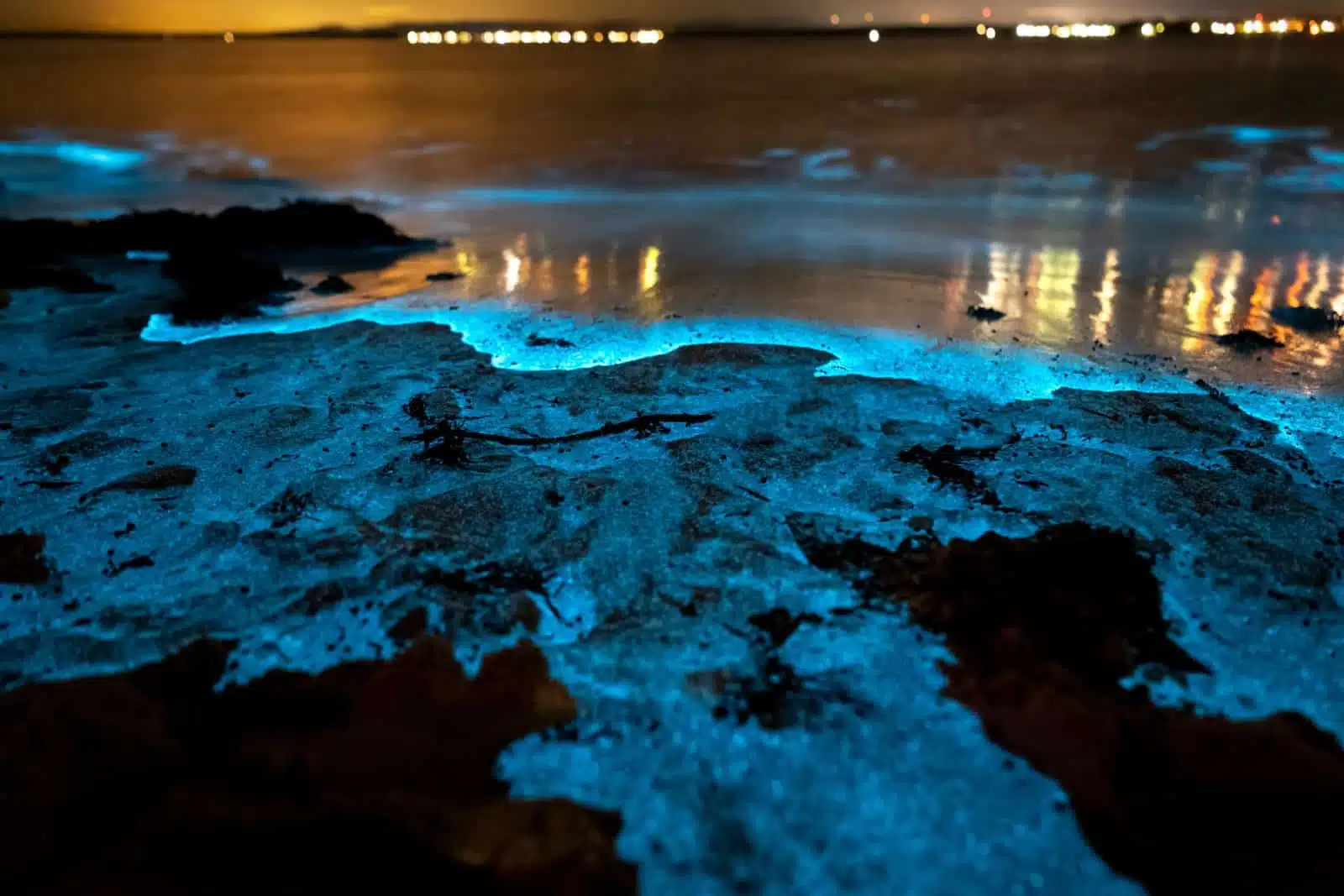
Image Credit: Shutterstock / Tharuka Photographer
Puerto Rico’s Bioluminescent Bay, or Mosquito Bay, located on the island of Vieques, offers a magical kayaking experience under the stars. The bay’s waters are home to millions of dinoflagellates, microorganisms emitting glowing light when disturbed. Paddling through these luminous waters at night is an unforgettable experience, highlighting the natural wonders of the Caribbean and the importance of preserving such unique ecosystems. The Guinness Book of World Records recognizes the bay as the brightest bioluminescent in the world.
Insider’s Tip: Visit on a new moon night for the most dramatic bioluminescence. Light pollution from the moon can diminish the visibility of the glow.
When to Travel: The bioluminescence is visible year-round, but the best conditions are during the drier months, from November to April.
How to Get There: A short flight from the main island of Puerto Rico can reach Vieques. Once on Vieques, several tour operators offer nighttime kayaking tours of the Bioluminescent Bay.
5. Exploring the Caves of Barbados’ Harrison’s Cave
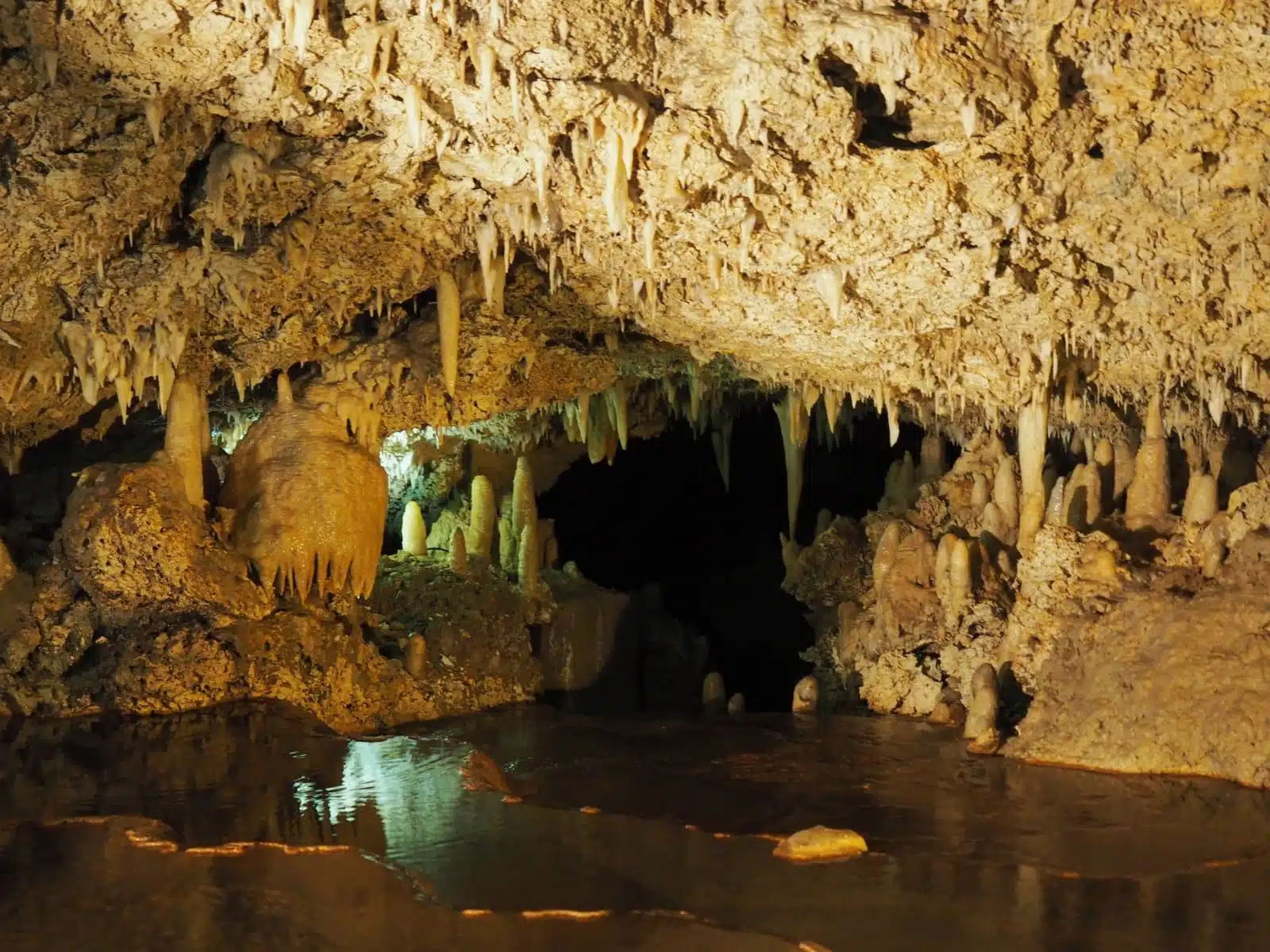
Image Credit: Shutterstock / Pornprapa Korprasert
Harrison’s cave, located in the central uplands of Barbados, is a crystallized limestone cavern system that offers a unique underground adventure. The cave features flowing streams, deep pools of crystal-clear water, and towering columns of stalactites and stalagmites. Guided tram tours take visitors through the cave’s most spectacular chambers, highlighting the geological history of Barbados and the cave’s role in the island’s freshwater supply. Harrison’s Cave is an example of eco-tourism that educates visitors on the importance of geological conservation while providing an awe-inspiring natural experience.
Insider’s Tip: Wear comfortable shoes and bring a light jacket, as temperatures inside the cave are cooler and the terrain can be damp.
When to Travel: Harrison’s cave is accessible year-round, offering a cool escape from the Caribbean heat at any time.
How to Get There: The cave is situated about a 30-minute drive from Bridgetown, Barbados. It’s easily accessible by taxi, rental car, or through organized tours from major hotels on the island.
6. Sustainable Farm Tours in Jamaica

Image Credit: Shutterstock / Sevenstock Studio
Jamaica offers visitors the chance to connect with the land through sustainable farm tours that showcase organic farming practices and traditional Jamaican agriculture. These tours, often hosted by small, family-run farms, provide insights into the cultivation of coffee, cocoa, spices, and tropical fruits. Visitors can learn about the farm-to-table movement in the Caribbean, taste fresh produce, and understand the challenges and rewards of sustainable farming in the region. These tours not only support local agriculture but also promote environmental awareness and the importance of sustainable food systems.
Insider’s Tip: Participate in a cooking demonstration if available. It’s a great way to learn about Jamaican cuisine and how to use fresh, local ingredients in traditional dishes.
When to Travel: The best time for farm tours is during the harvest seasons, which vary by crop but generally fall between January and May.
How to Get There: Sustainable farm tours are offered throughout Jamaica. The Blue Mountains, known for coffee production, and the rural areas around Montego Bay and Ocho Rios, are popular locations. Local tour operators can provide transportation and arrange visits.
7. Coral Reef Restoration in the Bahamas
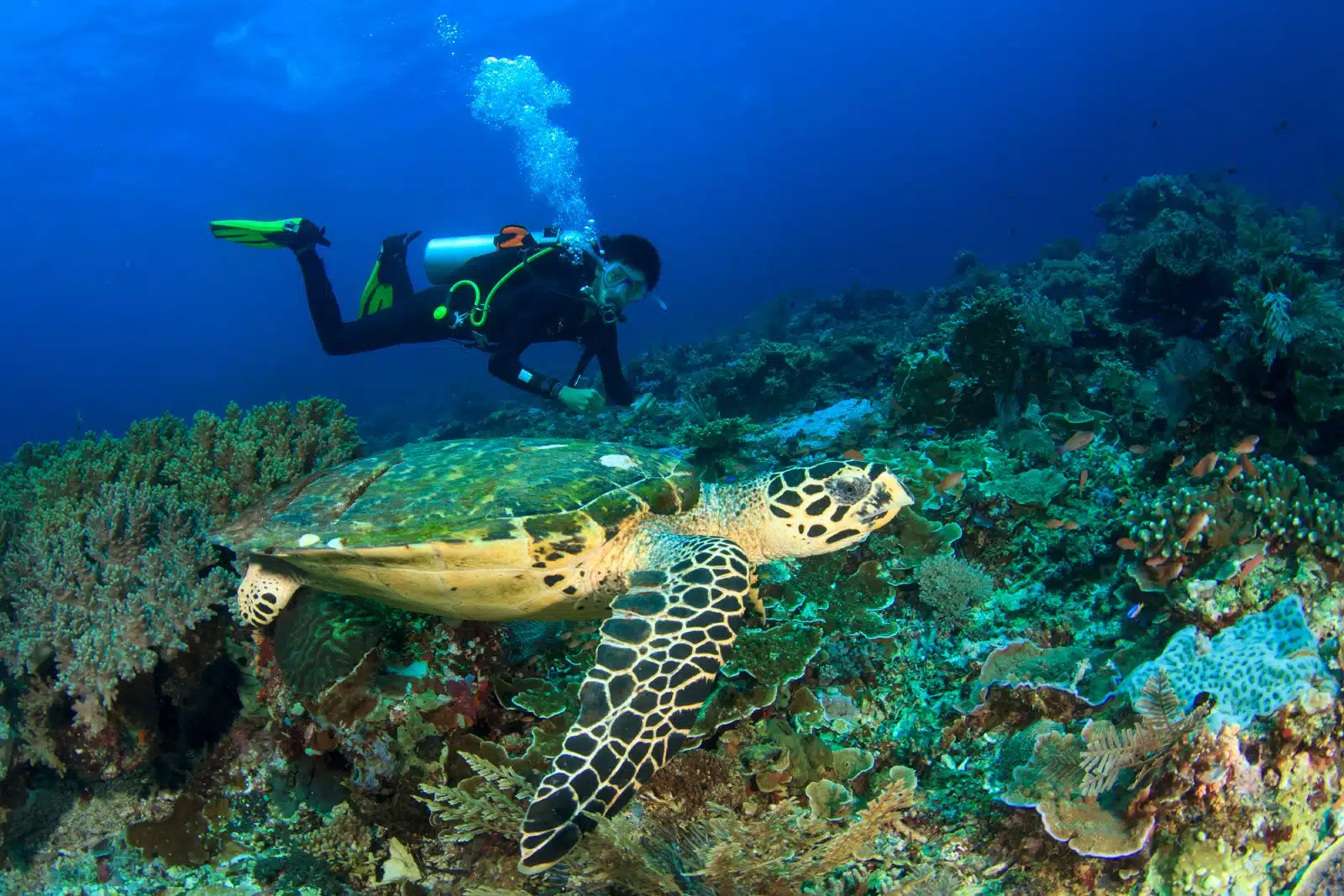
Image Credit: Shutterstock / Rich Carey
The Bahamas, with its extensive coral reefs, plays a crucial role in the marine ecosystem of the Caribbean. However, like many parts of the world, these reefs face climate change, overfishing, and pollution threats. Coral reef restoration projects in the Bahamas offer eco-conscious travelers a chance to contribute to preserving and rehabilitating these vital marine habitats. Participants can learn about coral ecology and the importance of reefs to marine life and local communities, and they can actively engage in restoration activities such as coral fragment planting.
Insider’s Tip: Choose a program that offers educational workshops or seminars as part of the experience. Gaining a deeper understanding of coral ecosystems and conservation strategies enriches the hands-on work.
When to Travel: Coral restoration activities are conducted year-round, but the best time to participate is during the calmer sea conditions of the spring and early summer months.
How to Get There: The Bahamas is accessible by international flights to Nassau or Freeport. From there, local travel arrangements to the project sites can be made through the organizing conservation groups or tour operators.
8. Mangrove Kayaking in the Cayman Islands
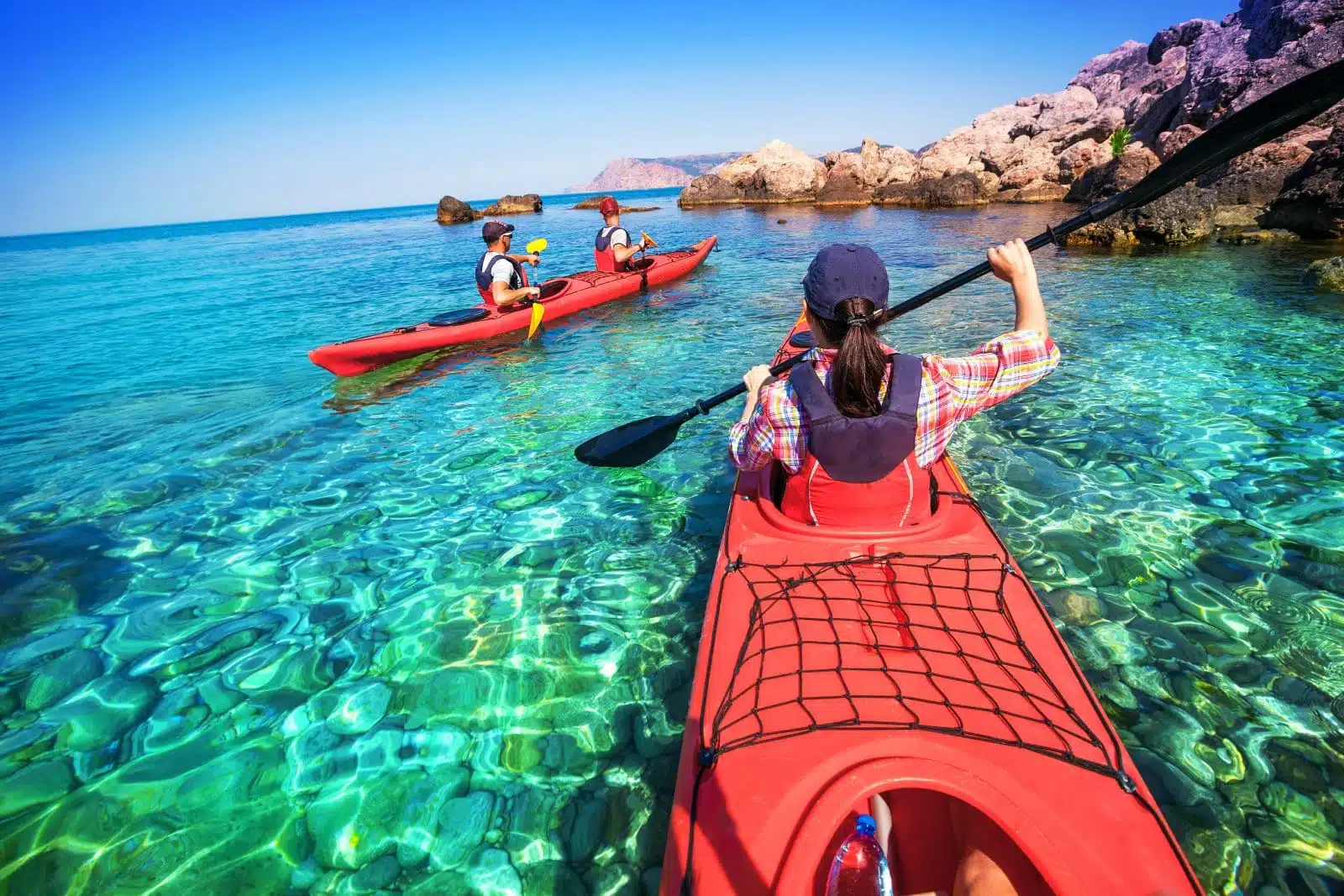
Image Credit: Shutterstock / Kuznetcov_Konstantin
The mangrove forests of the Cayman Islands serve as critical nurseries for marine life and act as natural barriers against coastal erosion. Kayaking tours through these mangroves offer a serene and shaded adventure on the water and an educational insight into the ecological importance of these habitats. Guided tours explain the role of mangroves in maintaining water quality, protecting coral reefs, and supporting biodiversity. This eco-adventure combines physical activity with environmental learning, highlighting the interconnectedness of the Cayman Islands’ ecosystems.
Insider’s Tip: Opt for a small group tour to ensure a more personalized and less intrusive experience. Early morning or late afternoon tours are recommended to avoid the heat and observe more wildlife.
When to Travel: The cooler, drier months from November to April provide the most comfortable conditions for kayaking in the mangroves.
How to Get There: The Cayman Islands are served by international flights to George Town. Mangrove kayaking tours are offered on Grand Cayman and can be arranged through local eco-tourism operators, many of which offer pickup services from major accommodations.
9. Hiking St. Lucia’s Pitons
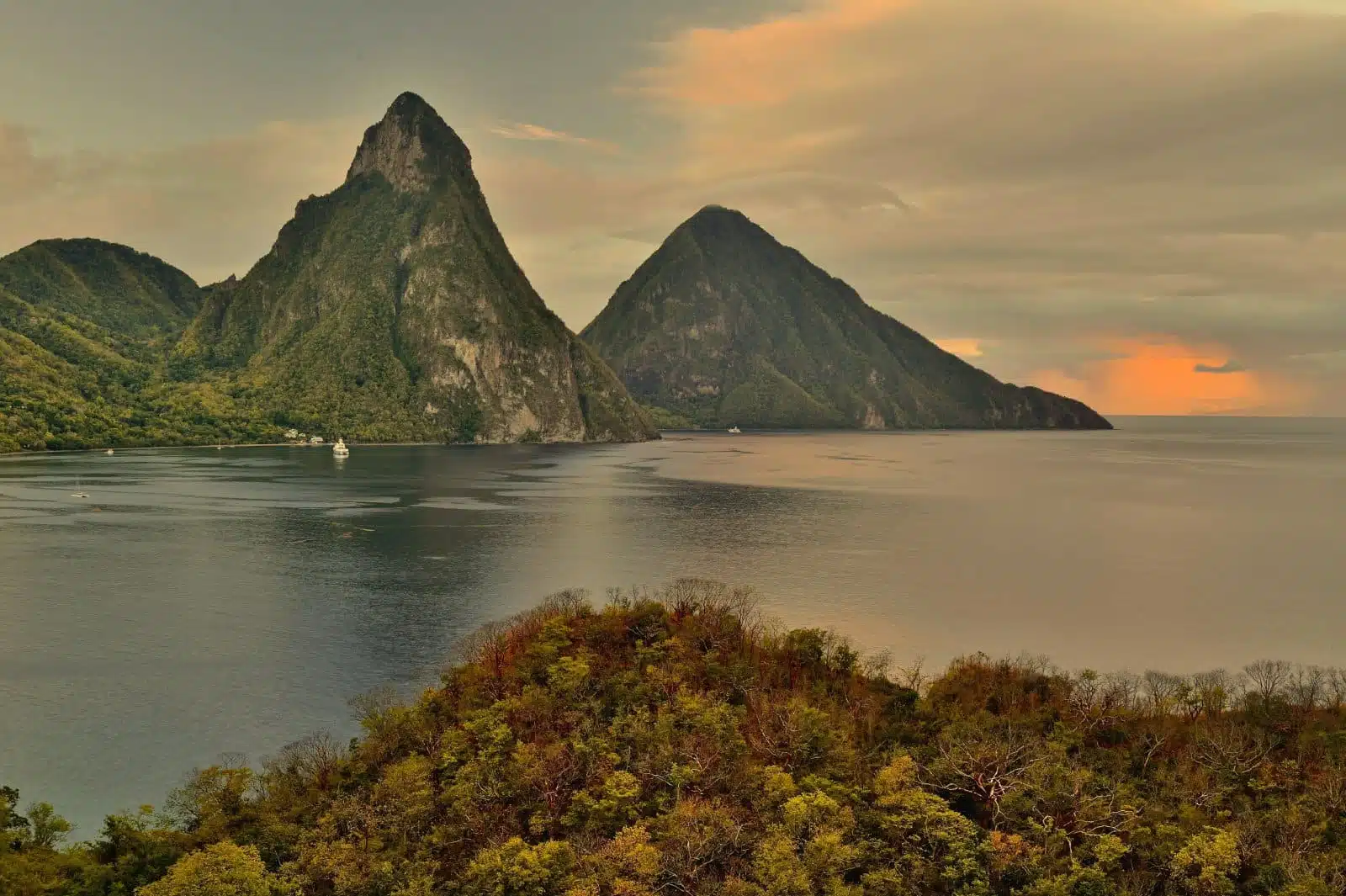
Image Credit: Pexels / Stephen Noulton
St. Lucia’s Pitons, two towering volcanic spires, are iconic landmarks and part of a UNESCO World Heritage site with 2,909 hectares of ocean and forest. Hiking either Gros Piton or Petit Piton offers breathtaking views and a challenging adventure through lush rainforests, past waterfalls, and up steep slopes. The hike, particularly up Gros Piton, is a popular eco-adventure that provides insight into the island’s volcanic geology and diverse ecosystems. Conservation efforts ensure the trails are maintained sustainably, protecting the natural beauty and biodiversity of the area.
Insider’s Tip: Gros Piton is the more accessible hike for those with moderate fitness levels. Hiring a local guide is required and adds value to the hike with local knowledge of the flora, fauna, and history.
When to Travel: The dry season from December to May is the best time for hiking the Pitons, with less slippery trails and clearer views.
How to Get There: St. Lucia is accessible by international flights to Hewanorra International Airport. The Pitons are located near Soufrière, with local tour operators offering guided hikes, including transportation from major hotel areas.
10. Eco-friendly Diving in Curaçao
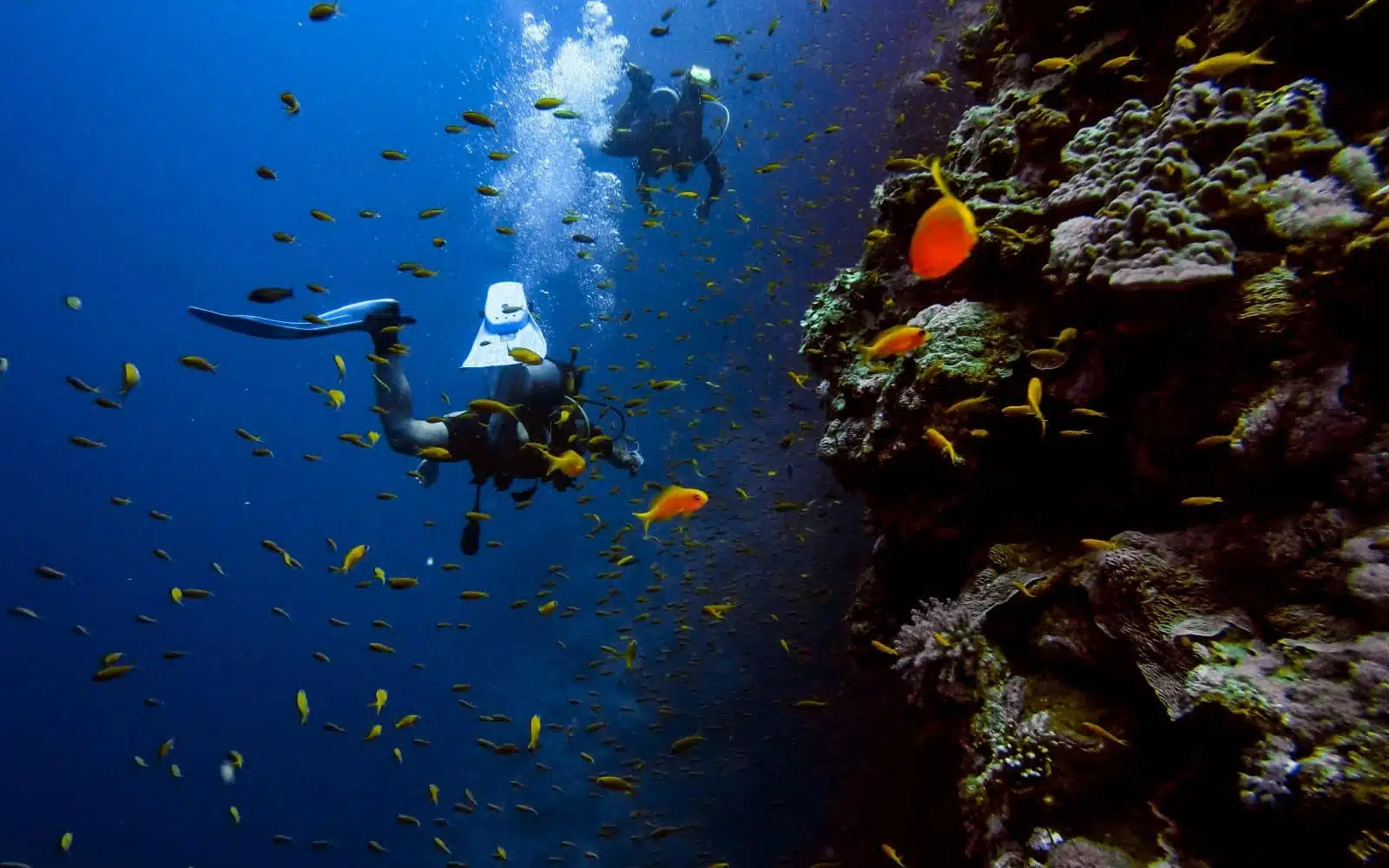
Image Credit: Pexels / Aviv Perets
Curaçao, with its vibrant coral reefs and clear waters, is a premier diving destination in the Caribbean. The island has taken significant steps to promote eco-friendly diving practices, including establishing marine protected areas and implementing sustainable tourism certifications for dive operators. Divers can explore a variety of underwater landscapes, from coral gardens to sunken ships, while learning about marine conservation and responsible diving practices. This eco-adventure combines the thrill of discovery with the principles of environmental stewardship.
Insider’s Tip: Choose a dive operator certified in sustainable practices, and consider participating in a reef conservation workshop or a clean-up dive to enhance your impact.
When to Travel: Diving conditions in Curaçao are excellent year-round, but the calmest sea conditions and best visibility are from April to November.
How to Get There: International flights to Willemstad serve Curaçao. Certified eco-friendly dive operators are located throughout the island, many offering transport from hotels to dive sites.
11. Exploring the Montserrat Volcano Observatory
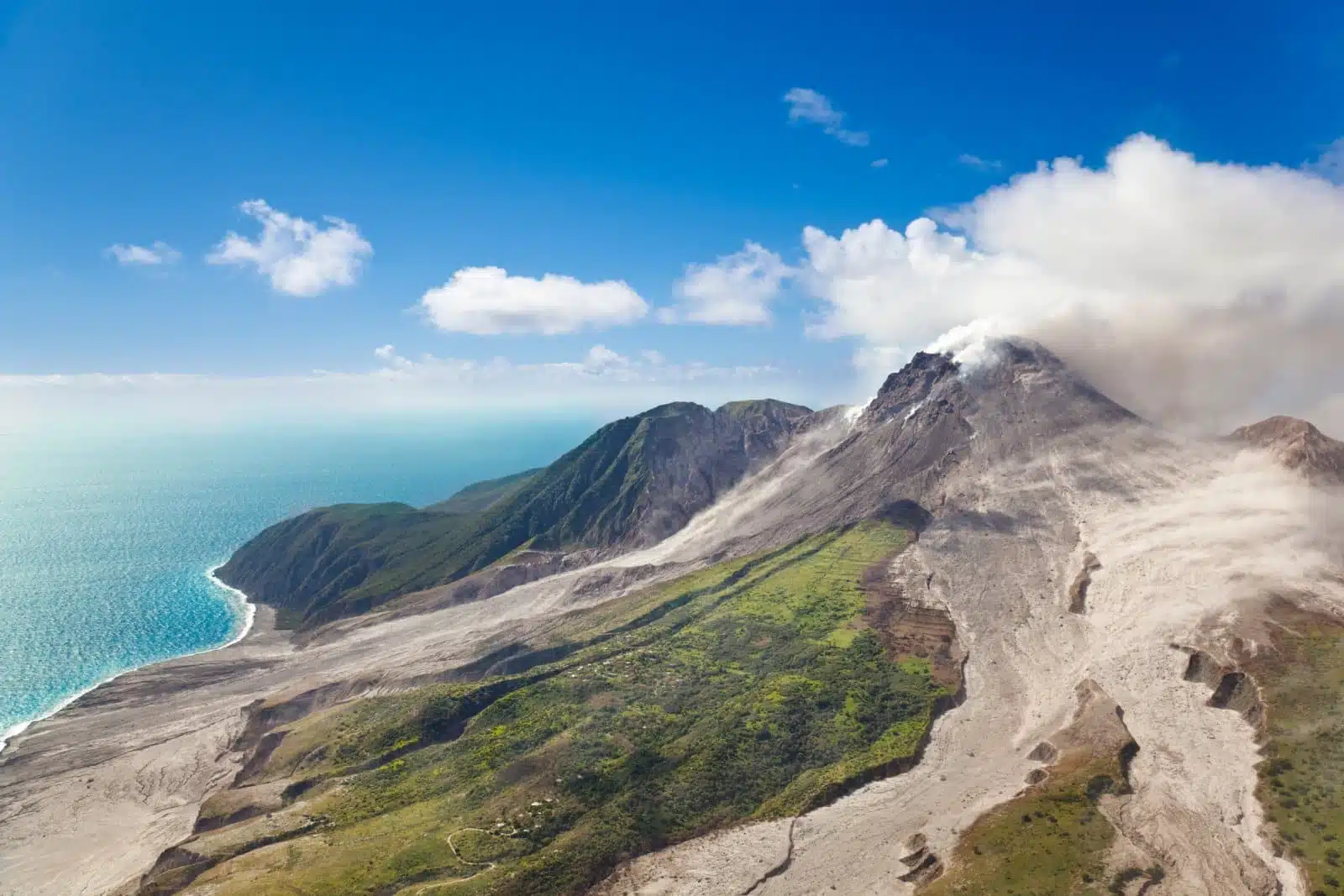
Image Credit: Shutterstock / IndustryAndTravel
Montserrat, often referred to as the “Emerald Isle” of the Caribbean due to its lush landscapes and Irish heritage, offers a unique eco-adventure with its active Soufrière Hills Volcano. The Montserrat Volcano Observatory (MVO) allows visitors to learn about volcanic activity and its impact on the island. Through exhibits and guided tours, the MVO educates on the science of volcanology, the history of the Soufrière Hills Volcano eruptions, and the ongoing monitoring efforts to ensure the safety of Montserrat’s residents. This visit offers insight into the natural forces that shape our world and underscores the importance of scientific research in disaster preparedness and environmental management.
Insider’s Tip: Check the observatory’s schedule for guided tours, which often include talks by volcanologists. These tours provide deeper insights into the volcano’s activity and the observatory’s critical work.
When to Travel: The MVO can be visited year-round. However, the dry season from January to April offers clearer skies for viewing the volcano and its surroundings.
How to Get There: Montserrat is accessible by air with flights from Antigua. From John A. Osborne Airport in Montserrat, visitors can rent a car or take a taxi to the Montserrat Volcano Observatory located in Flemings, on the island’s safe zone.
12. Participating in Sea Turtle Conservation in Trinidad and Tobago
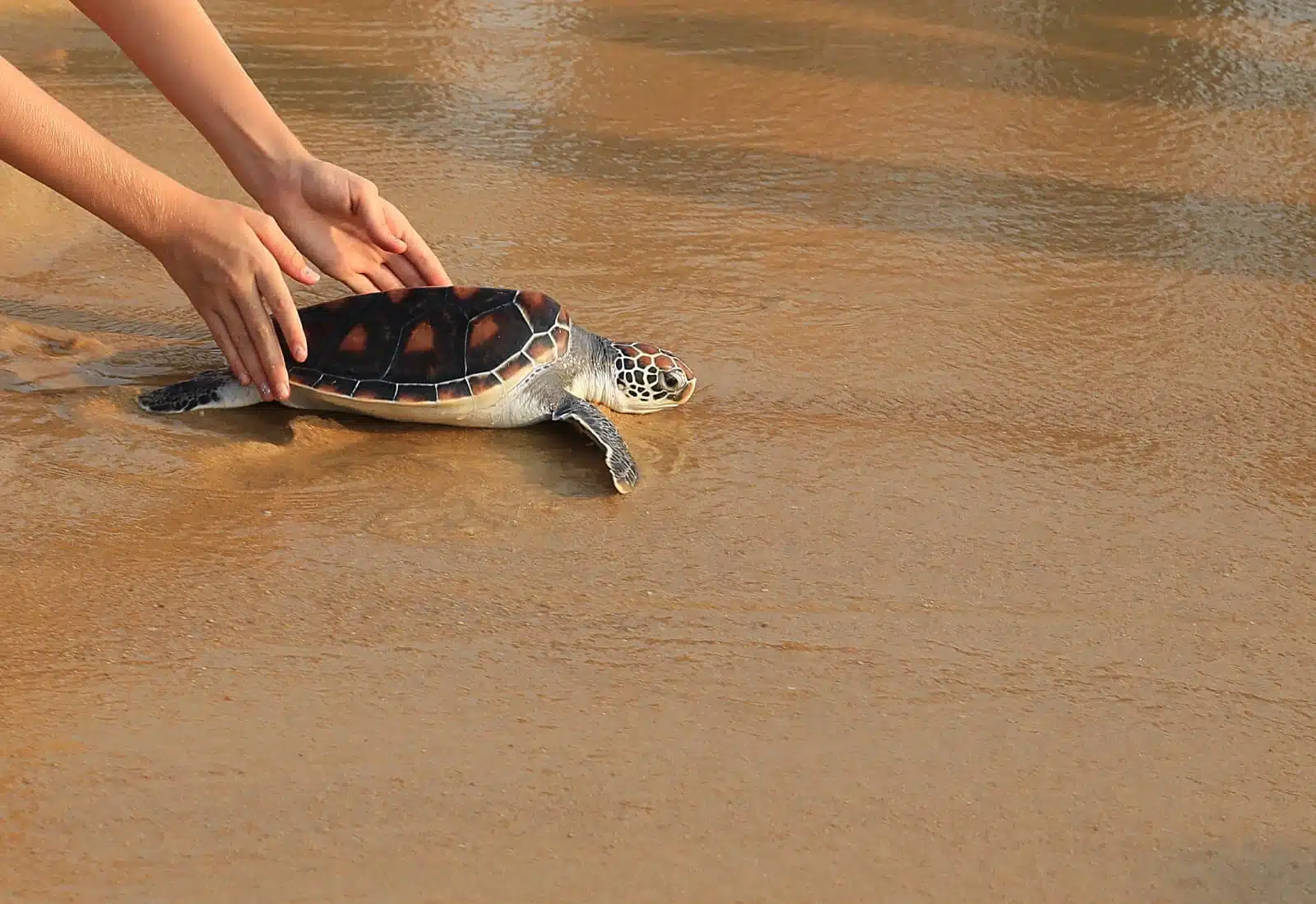
Image Credit: Shutterstock / Khunjompol
Trinidad and Tobago are critical nesting sites for several species of endangered sea turtles, including the leatherback, hawksbill, and green turtles. Participating in sea turtle conservation efforts provides an eco-adventure that combines wildlife observation with active participation in conservation. Visitors can join night patrols on nesting beaches, assist in data collection, and sometimes witness the release of hatchlings into the ocean. These activities are conducted under the guidance of local conservation organizations, ensuring minimal disturbance to the turtles and maximizing the educational value of the experience.
Insider’s Tip: Wear dark clothing and use red light torches during night patrols to avoid disturbing the nesting turtles. Follow the guidelines provided by the conservation teams to ensure a respectful and safe experience for both visitors and turtles.
When to Travel: The sea turtle nesting season runs from March to August, with the peak nesting period for leatherback turtles from April to June.
How to Get There: Trinidad and Tobago are accessible by international flights to Piarco International Airport in Trinidad and A.N.R. Robinson International Airport in Tobago. Conservation programs are located along the coasts, with organizations often providing transportation from major towns to the nesting sites.
The Bottom Line
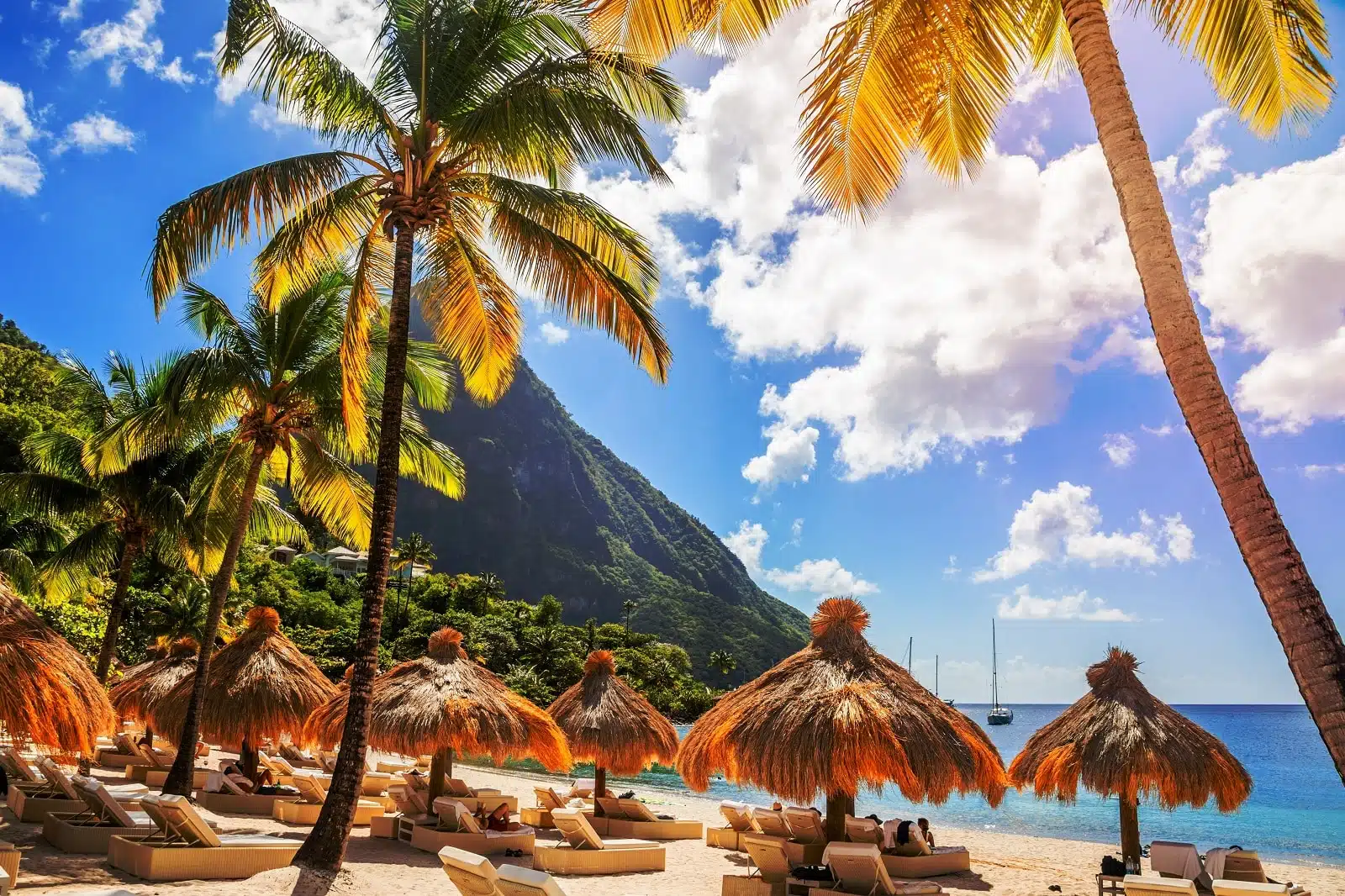
Image Credit: Shutterstock / lexrvulescu
Exploring the Caribbean’s eco-adventures offers a journey into the heart of the region’s natural beauty and biodiversity. Beyond the postcard-perfect beaches, these activities invite travelers to engage with the environment in a meaningful and sustainable way. By choosing eco-friendly adventures, you contribute to the preservation of the Caribbean’s ecosystems while experiencing the thrill of discovery and the joy of connecting with nature. Whether hiking through Dominica’s lush landscapes or snorkeling in Belize’s vibrant marine reserves, your journey beyond the beaches reveals the true essence of the Caribbean, leaving you with memories that are as impactful as they are beautiful.
More From The Green Voyage
Top 10 Trending Travel Destinations 2024
6 Essential Banking Apps for International Travel – Managing Your Finances on the Go
Traveling With Kids – 10 Tips to Create Memorable Family Holidays
The post 12 Eco-Adventures in the Caribbean – Beyond the Beaches 2024 first appeared on The Green Voyage.
Featured Image Credit: Shutterstock / NicoElNino.
For transparency, this content was partly developed with AI assistance and carefully curated by an experienced editor to be informative and ensure accuracy.
Tips for Trip Success
Book Your Flight
Find an inexpensive flight by using Kayak, a favorite of ours because it regularly returns less expensive flight options from a variety of airlines.
Book Your Hotel or Special Accommodation
We are big fans of Booking.com. We like their review system and photos. If we want to see more reviews and additional booking options, we go to Expedia.
You Need Travel Insurance!
Good travel insurance means having total peace of mind. Travel insurance protects you when your medical insurance often will not and better than what you get from your credit card. It will provide comprehensive coverage should you need medical treatment or return to the United States, compensation for trip interruption, baggage loss, and other situations.Find the Perfect Insurance Plan for Your Trip
